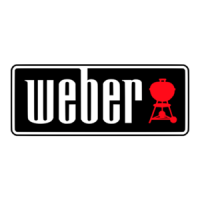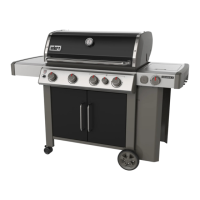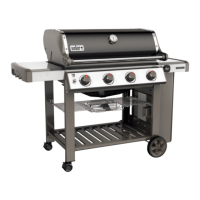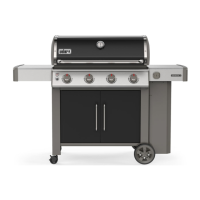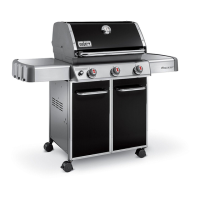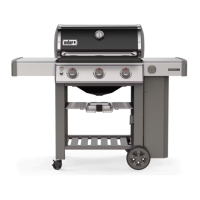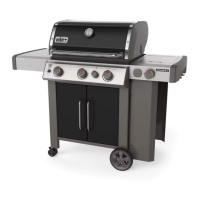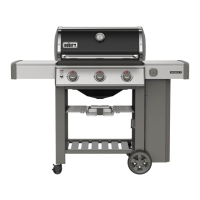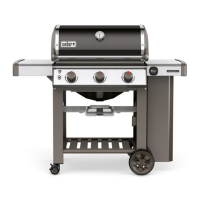17
Preheat each and every time.
If the cooking grates are not hot enough, the food will stick and you will likely never
have a chance of searing your food properly or developing those handsome sear
marks. Even if a recipe calls for medium or low heat, always preheat the barbecue
on the highest setting first. Open the lid, turn up the heat, close the lid, and then let
the cooking grate heat up for 15 minutes on high.
Don't barbecue on dirty grates.
Placing food onto the cooking grates before they have been cleaned is never a
good idea. Leftover “stu” on the grates acts like glue, binding it to the grates and
your new food. To avoid tasting last night’s dinner on today’s lunch, make sure that
you are barbecuing on a clean cooking grate. Once the grates are preheated, use a
stainless steel bristle barbecue brush to make a clean, smooth surface.
Be present in the process.
Before firing up your barbecue, make sure that everything you need is within arm’s
reach. Don’t forget your essential barbecuing tools, such as oiled and seasoned food,
glazes or sauces and clean cooking platters for the cooked food. Having to run back
to your kitchen not only means missing out on the fun, but it could also result in
burning your food. French chefs call this ‘mise en place’ (meaning, ‘put in place’). We
call it ‘being present’.
Create a little elbow room.
Packing too much food onto the cooking grates restricts your flexibility. Leave at
least one-quarter of the cooking grates clear with plenty of space between each food
item in order to get your tongs in there and easily move the food around. Sometimes
barbecuing involves split-second decisions and the need to move food from one area
of the barbecue to another. Sogive yourself enough room to operate.
Try not to peek.
The lid on your barbecue is for more than just keeping the rain out. Most importantly,
it’s for preventing too much air from getting in and too much heat and smoke from
getting out. When the lid is closed, the cooking grates are hotter, the barbecuing
times are faster, the smoky tastes are stronger, and the flare-ups are fewer. So put a
lid on your barbecue!
Only flip once.
What’s better than a juicy steak with a deep sear and plenty of beautifully-
caramelised bits? The key to accomplishing these results is to keep your food in
place. Sometimes we have the tendency to flip our food before it reaches the desired
level of colour and flavour. In nearly all cases, you should turn food just once. If you
are moving it more than that, you are probably also opening the lid too often which
causes its own set of problems. So step back and trust the barbecue.
Know when to tame the flame.
When barbecuing, sometimes the most important thing to know is when to stop.
The most reliable way to test doneness of your food is to invest in an instant-read
thermometer. This slim little gem will help you pinpoint that critical moment when
your food is at its best.
Don’t be afraid to experiment.
Back in the 1950s, barbecuing meant one thing: meat (and only meat) charred over
open flames. Themodern day garden chef doesn’t need a kitchen in order to prepare
a full course meal. Use your barbecue to make char-grilled starters, sides, and even
sweets. Register your barbecue to receive special content that will inspire you along
the way. We’d love to join you on your barbecuing adventures.
Tips and Hints
BarbecuingDo’s andDon’ts
